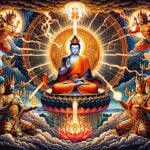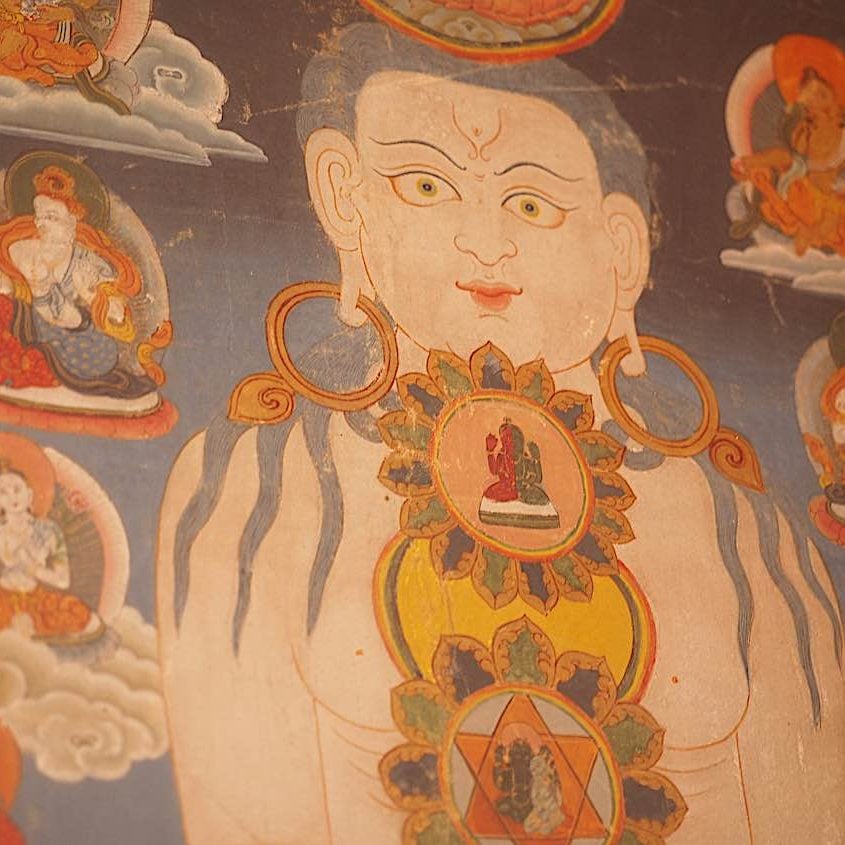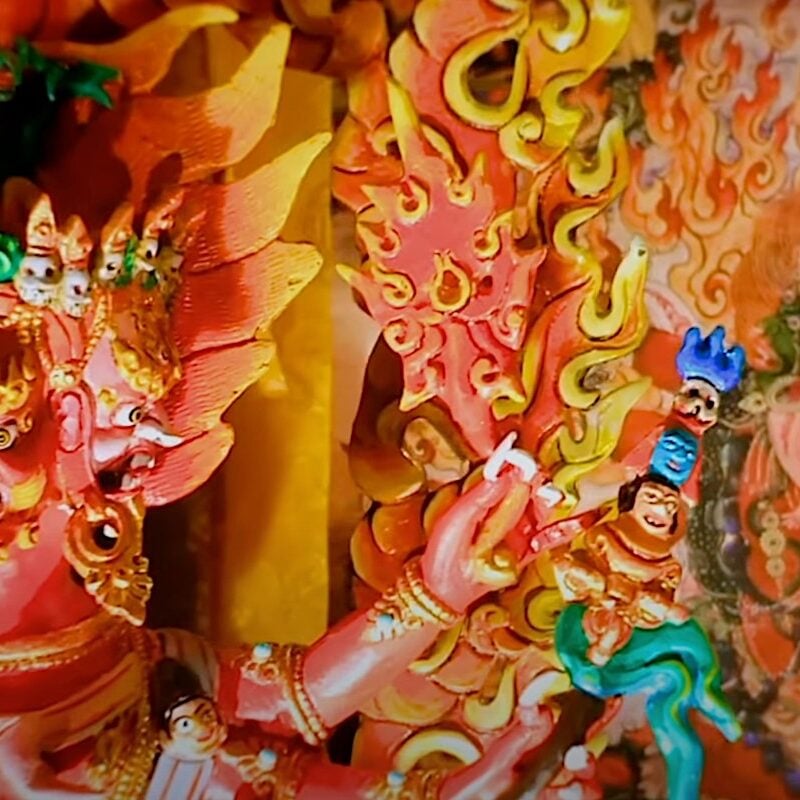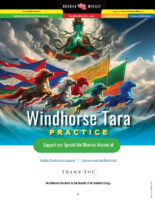Amazing Choral Chanting of Heart Sutra Recitation: requested by Dzongsar Khyentse Rinpoche; singers around the world
Beautiful chanting of the Heart Sutra, the request of Dzongsar Khyentse Rinpoche, to commemorate Saga Dawa Duchen — recorded on June 4-5 2020. Dozens of people chanted as a virtual choir on Zoom in an amazingly beautiful chant.
Note: Heart Sutra recitation is meritorious. To chant along with Rinpoche and the Sangha, see the Sutra text translation below (this is the one used by the choir, from the Nalanda Translation Committee).
The virtual event — not to be missed now as a recorded — was described as:
Heart Sutra Recitation, 4 – 5 June 2020, Global
“At the request of Dzongsar Khyentse Rinpoche, this is a new choral arrangement of the Heart Sutra presented as a “virtual choir.” It was sung as separate tracks by over thirty participants in ten different countries, which were then edited together to create the choral arrangement. The video was produced and edited using Zoom and broadcast across the world on Zoom, YouTube and Facebook Live for 24 hours to commemorate Saga Dawa Düchen, the day where Buddha’s birth, enlightenment and parinirvana is celebrated across the world.
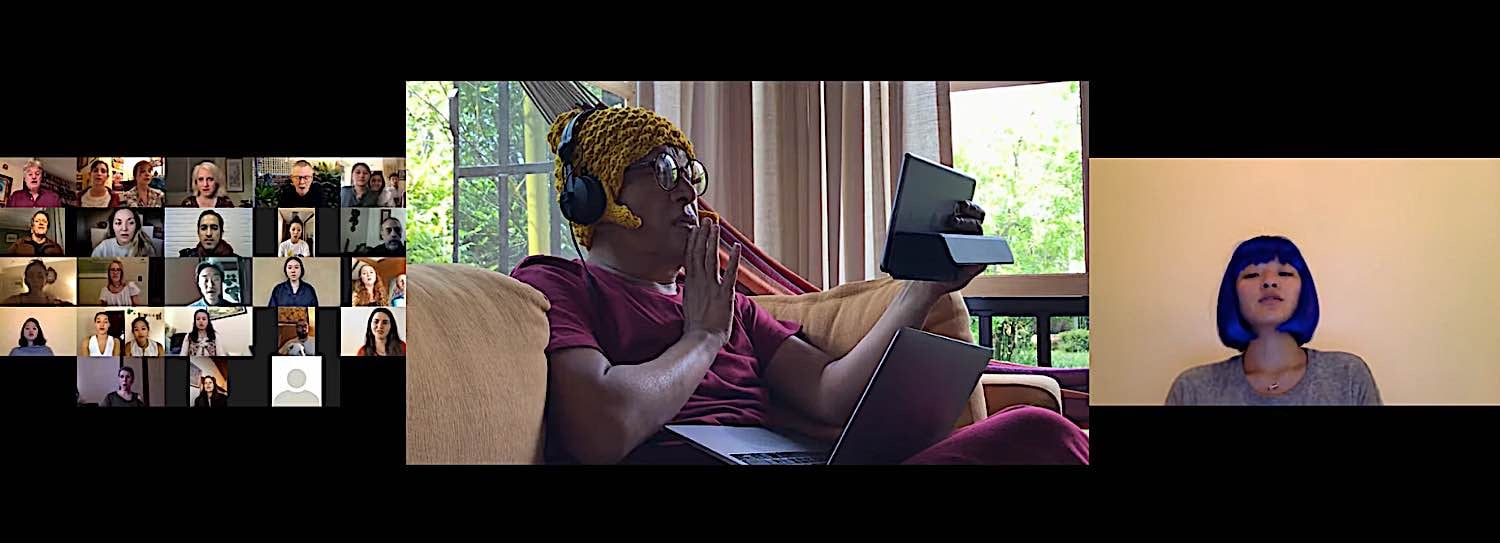
The melody is based [on] a musical setting of the “Nilakantha Dharani,” a dharani associated with Avalokiteshvara in Japanese Buddhism, written by Kanho Yakushiji, a Zen priest. The translation of the Heart Sutra was done by the Nalanda Translation Committee, the video editing by Sophie Perks and the choral arrangement by Harry Einhorn. Produced and practiced with the intention of pacifying the turmoil of the world at this time, in the words of Dzongsar Khyentse Rinpoche, “May we invoke love, kindness, and healing, and open our hearts for the earth.”

To Chant Along: Heart Sutra
THE SUTRA OF THE HEART OF TRANSCENDENT KNOWLEDGE
Thus have I heard. Once the Blessed One was dwelling in Råjagriha at Vulture Peak mountain, together with a great gathering of the sangha of monks and a great gathering of the sangha of bodhisattvas. At that time the Blessed One entered the samådhi that expresses the dharma called “profound illumination,” and at the same time noble Avalokiteshvara, the bodhisattva mahåsattva, while practicing the profound prajñåpåramitå, saw in this way: he saw the five skandhas to be empty of nature.
Then, through the power of the Buddha, venerable Shåriputra said to noble Avalokiteshvara, the bodhisattva mahåsattva, “How should a son or daughter of noble family train, who wishes to practice the profound prajñåpåramitå?”
Addressed in this way, noble Avalokiteshvara, the bodhisattva mahåsattva, said to venerable Shåriputra, “O Shåriputra, a son or daughter of noble family who wishes to practice the profound prajñåpåramitå should see in this way: seeing the five skandhas to be empty of nature. Form is emptiness; emptiness also is form. Emptiness is no other than form; form is no other than emptiness. In the same way, feeling, perception, formation, and consciousness are emptiness. Thus, Shåriputra, all dharmas are emptiness. There are no characteristics.
There is no birth and no cessation. There is no impurity and no purity. There is no decrease and no increase. Therefore, Shåriputra, in emptiness, there is no form, no feeling, no perception, no formation, no consciousness; no eye, no ear, no nose, no tongue, no body, no mind; no appearance, no sound, no smell, no taste, no touch, no dharmas; noeye dhåtu up to no mind dhåtu, no dhåtu of dharmas, no mind consciousness dhåtu; no ignorance, no end of ignorance up to no old age and death, no end of old age and death; no suffering, no origin of suffering, no cessation of suffering, no path, no wisdom, no attainment, and no nonattainment.
Therefore, Shåriputra, since the bodhisattvas have no attainment, they abide by means of prajñåpåramitå. Since there is no obscuration of mind, there is no fear. They transcend falsity and attain complete nirvåna. All the buddhas of the three times, by means of prajñåpåramitå, fully awaken to unsurpassable, true, complete enlightenment.
Therefore, the great mantra of prajñåpåramitå, the mantra of great insight, the unsurpassed mantra, the unequaled mantra, the mantra that calms all suffering, should be known as truth, since there is no deception. The prajñåpåramitå mantra is said in this way:
OM GATE GATE PÅRAGATE PÅRASAMGATE BODHI SVÅHÅ
Thus, Shåriputra, the bodhisattva mahåsattva should train in the profound prajñå-påramitå.”
Then the Blessed One arose from that samådhi and praised noble Avalokiteshvara, the bodhisattva mahåsattva, saying, “Good, good, O son of noble family; thus it is, O son of noble family, thus it is. One should practice the profound prajñåpåramitå just as you have taught and all the tathågatas will rejoice.”
When the Blessed One had said this, venerable Shåriputra and noble Avalokiteshvara, the bodhisattva mahåsattva, that whole assembly and the world with its gods, humans, asuras, and gandharvas rejoiced and praised the words of the Blessed One.
- For Dzongsar Jamyan Kyentse’s Rinpoche’s Facebook page please visit>>
- For more information on Dzongsar Rinpoche, please visit Siddartha’s Intent website>>
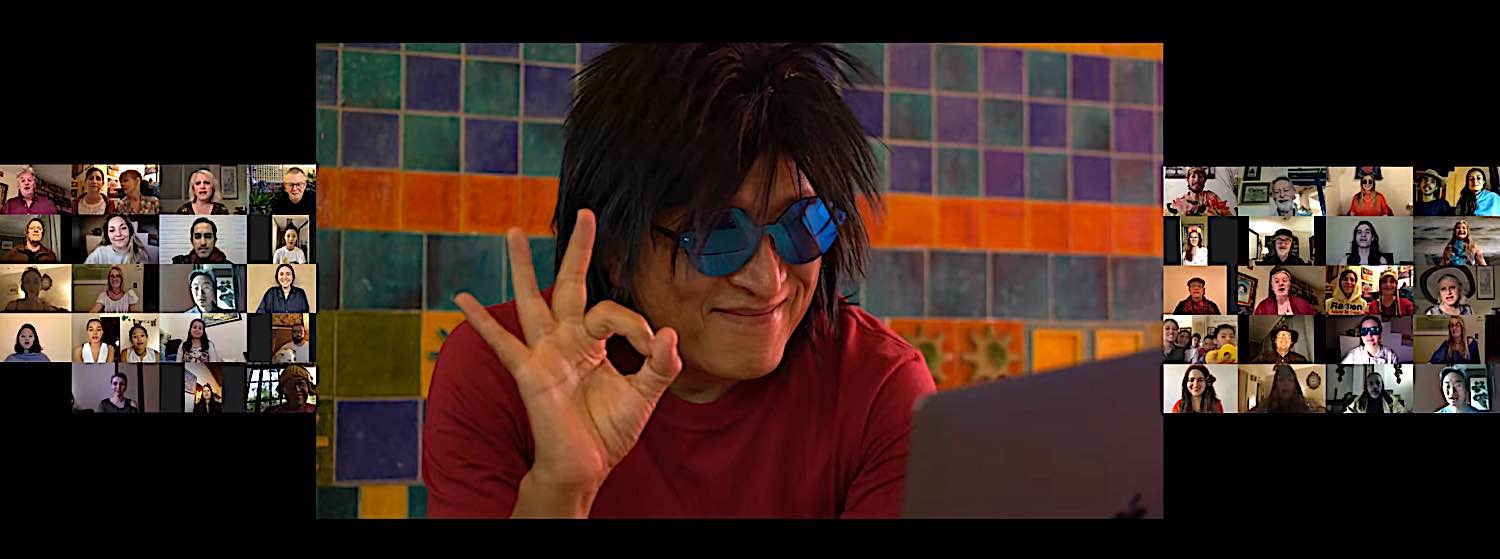
More articles by this author
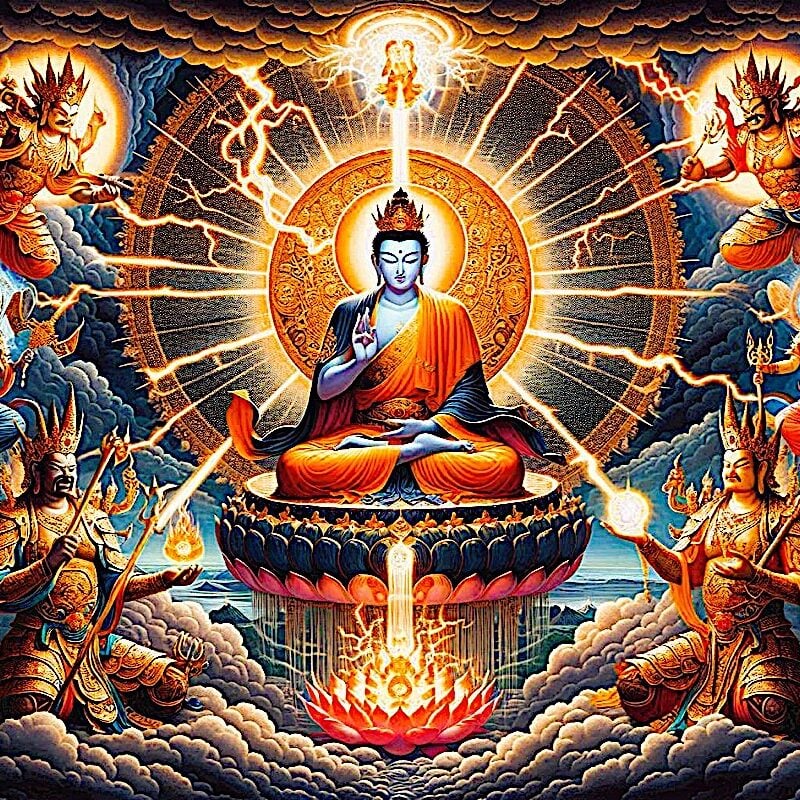
Protection from all Harm, Natural Disaster, Weather, Spirits, Evil, Ghosts, Demons, Obstacles: Golden Light Sutra: Chapter 14

Guru Rinpoche is ready to answer and grant wishes: “Repeat this prayer continuously” for the granting of wishes
Search
Latest Features
Please support the "Spread the Dharma" mission as one of our heroic Dharma Supporting Members, or with a one-time donation.
Please Help Support the “Spread the Dharma” Mission!

Be a part of the noble mission as a supporting member or a patron, or a volunteer contributor of content.
The power of Dharma to help sentient beings, in part, lies in ensuring access to Buddha’s precious Dharma — the mission of Buddha Weekly. We can’t do it without you!
A non-profit association since 2007, Buddha Weekly published many feature articles, videos, and, podcasts. Please consider supporting the mission to preserve and “Spread the Dharma." Your support as either a patron or a supporting member helps defray the high costs of producing quality Dharma content. Thank you! Learn more here, or become one of our super karma heroes on Patreon.
Lee Kane
Author | Buddha Weekly
Lee Kane is the editor of Buddha Weekly, since 2007. His main focuses as a writer are mindfulness techniques, meditation, Dharma and Sutra commentaries, Buddhist practices, international perspectives and traditions, Vajrayana, Mahayana, Zen. He also covers various events.
Lee also contributes as a writer to various other online magazines and blogs.






